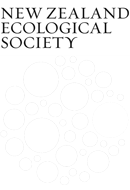- Science Directorate, Department of Conservation, P.O. Box 10420, Wellington, New Zealand
Abstract
The diet of the Stewart Island brown kiwi at Scollay's Hat, southern Stewart Island was determined by analysis of 146 faeces collected during 11 field-trips from September 1982 to October 1984. A variety of invertebrates and a small quantity of plant matter were represented in the faeces. The four invertebrate groups excluding Annelida, that contributed most soft tissue dry matter to the sample were Lepidoptera (36%), Coleoptera (21%), Arachnida (19%) and Hemiptera (10%). Circumstantial evidence suggests that the habit of the Stewart Island brown kiwi of foraging by day is partly a response to low invertebrate biomass in the island's nutrient-poor soils.
